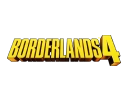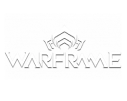Black Ops 7 arrives as both a continuation and a reset. The story pushes forward but still respects what came before. It is designed to orient new players in minutes, while giving veterans small touches that reward long memory. This guide keeps spoilers light. The focus is on timeline, characters, and setting—enough to understand where you are stepping in.
Black Ops 7 takes place in 2035. The year is positioned as a bridge. It connects the shadow of past Cold War stories with the near-future conflicts teased in earlier games.
For veterans, the year feels familiar. Echoes of Mason, Woods, and the old CIA networks still shape the world. At the same time, drones, AI, and new technology mark the difference from the earlier decades. The past is never gone, but the future presses in at every turn. This tension gives the story its pulse.
For new players, 2035 works as a clean entry point. You don’t need to play every older entry to follow the plot. The game gives just enough history to add weight, but it doesn’t demand homework. One short recap is enough to feel oriented. Missions are written with context in mind, making sure nobody feels left out.
The setting blends past and future. You see the ghosts of Cold War tactics alongside tools of tomorrow. This mix makes 2035 both a memory and a warning. It’s a year built to test what remains of trust, loyalty, and control when old enemies and new technology collide.
David Mason’s Squad and Core Roles
David Mason leads the squad in 2035. He is older, sharper, and more pragmatic than before. His team is not large, but it is balanced. Each member reflects a gameplay role, giving missions tactical variety. Players feel this balance in every mission, because no role dominates alone.
- The Tactical Lead sets direction. Mason fills this chair. In the story, he drives to work and makes choices. In play, this means clear goals and plans. His being keeps the team arranged
- The Big Help gives strong shots. This job keeps spots, helps pull backs, and quiets foes. Users notice it in big fights, where keeping hold is more impo͏rtant than quickness. The big worker makes group control simpler, and living longer more possible.
- The Recon/Tech job looks at info. This teammate checks, breaks in, and keeps data safe. Their gear opens ways for sneakiness, lets you find paths, and gives gamers more choices in how to go about things. In tasks with online parts this role shines most bright!
- The Flex Operator changes. Sometimes they get help, sometimes they come from the side. They fill holes when jobs change. This bend helps keep jobs from being too stiff. In play, it means you always got backup when things go wrong.
Together, these roles create a squad that feels both believable in story and practical in missions. Every operator has a voice, and every function has a purpose.
Squad Roles Overview:
| Role Archetype | Function in Story | Gameplay Impact |
|---|---|---|
| Tactical Lead | Sets direction, drives missions | Guides objectives and strategy |
| Heavy Support | Provides firepower, holds lines | Crowd control, suppressing fire |
| Recon/Tech | Scans, hacks, gathers intel | Expands options, supports stealth |
| Flex Operator | Covers gaps, adapts roles | Versatile backup across missions |
New 2035 Setting and World Context
The year 2035 sets the mood for Black Ops 7. It is a place where new gadgets go with chaos. Players join tasks that seem advanced but are still in old fights. This blend makes the scene different from past games, yet not strange.
Tech leads the stress. AI gadgets and flying machines are here, but they ain’t always steady. Arms have ͏cool bits attached, but fighters still need shoes on the ground. The tale shows this conflict: fancy tools bumping into past ways of working.
Alliances are broken. No one power rules. Instead, folks move through a mix of fought-over areas and shaky groups. Missions take place in zones where loyalties shift quickly. The uncertainty keeps every operation tense.
Urban sprawl creates another layer. Cities in 2035 are dense, vertical, and heavily surveilled. Missions in these areas feel claustrophobic, with threats around every corner. At the same time, rural battlefields remain relevant. Old infrastructure, abandoned facilities, and frontier zones balance the urban maps.
The digital battlefield grows just as important. Information warfare, hacking, and cyber disruption appear in missions. Players face enemies who fight with both guns and code. Yet, despite these tools, close combat remains decisive. Guns, movement, and squad cohesion still win fights.
The setting makes every mission a hybrid. It is futuristic enough to feel new but anchored enough to feel like Black Ops. This is why 2035 works—it bridges the old and the new without losing either side.
Connections to Earlier Black Ops Arcs
Black Ops 7 doesn’t cut itself off from its past. The Mason legacy is still present. David Mason’s role anchors the story to the franchise’s earlier arcs, even as the plot pushes into new ground. Players who remember the Cold War themes and the covert struggles of the first games will recognize echoes everywhere.
Subtle nods connect this entry to earlier missions. Old names surface in files, dialogue, or passing references. Locations and strategies sometimes feel like deliberate callbacks, reminding fans that history never vanishes. These ties are not loud or distracting. Instead, they serve as reminders that what came before still matters.
For veterans, the effect is satisfying. Every reference adds depth without stealing focus. For newcomers, nothing is lost. The story never demands prior knowledge, and you can still follow it without playing a single older title. That balance is deliberate. Treyarch wants to respect history while keeping the door open. The result is a story that honors its roots, but doesn’t chain itself to them.
How Treyarch Frames the Crew Beats
Treyarch’s design philosophy in Black Ops 7 goes beyond firefights. Crew beats are central. These beats are not just dialogue—they are rhythm. Each member of Mason’s team carries a role that shapes pacing. One character pushes tempo and urgency. Another grounds the moment, steadying the flow. A third adds technical insight, bringing tools and data into the scene. The fourth flexes, filling whatever gap exists.
Together, these voices create a layered rhythm. Dialogue becomes purposeful. Mission pacing feels smoother because the crew dynamic is built like music. High-intensity moments rise with urgency from the lead. Quiet sections settle when the anchor grounds them. Tech adds texture, flex adds surprise.
This framing ensures players feel guided, not drowned. There are no wasted lines, no filler chatter. Instead, every exchange matches the flow of action on screen. The beats help missions move naturally, carrying you from firefight to stealth to regroup. Treyarch’s crew system turns dialogue into part of gameplay, not background noise, making the story feel alive and mission flow more precise.
Spoiler-Free Orientation for Newcomers
If this is your first Black Ops, you can start here without trouble. The game is built to welcome fresh players. What you need to know is simple. The Mason family has been at the center since the earliest games, shaping decisions and legacies. Trust, betrayal, and hidden agendas have always been the heartbeat of the series. Black Ops 7 gives just enough of that past to make 2035 feel natural without drowning you in old plotlines. Veterans see echoes, newcomers see clean introductions. Both can follow the story without confusion.
For newcomers, there’s value in how missions are structured. Each objective teaches new mechanics, all while conveying a portion of the narrative. The early sections centered around stealth introduce the pacing of the story, and later, squad-led firefights take the story up a notch. This design structure means the campaign is approachable even if this is your first Call of Duty experience.
For best results, make sure to listen to the squad. Important information about position, construction, equipment, and the right moment for action can come up in conversation. Such a dialogue mechanism can serve instructional purposes without breaking the immersion of the story. The game also rewards your thoughtful observation. Elements such as maps, screens, and conversations in the environment provide contextual information. For first-time players, this makes Black Ops 7 an accessible game, and for players that want to engage with the deeper game mechanics, it offers so much to uncover.
Quick Takeaways in Five Minutes Flat
- The year is 2035, marking a bridge into a new Black Ops era.
- David Mason commands a squad designed for tactical variety.
- The setting is unstable, shaped by fractured politics and volatile technology.
- Loyalty and control remain central themes that tie back to earlier arcs.
- Crew beats frame the narrative, turning dialogue into pacing tools that guide each mission.
In five minutes, you’re oriented. You know the time, the team, the world, the themes, and the rhythm. That’s enough to step in spoiler-free and still feel prepared for Black Ops 7.
Weapons and Tech Shaping 2035 Combat
Combat in 2035 blends the old with the new. Players still fire rifles, SMGs, and shotguns, but each weapon feels tuned for speed and control. High-capacity magazines give room for longer firefights. Advanced optics sharpen sightlines and make long duels more tactical. The feel is modern and responsive, without leaving behind the grounded style of earlier games.
Technology expands the battlefield. Drones provide reconnaissance or disrupt enemy routes. Digital warfare tools jam signals or open paths for stealth. These additions add layers of strategy but avoid tipping into science fiction. The game keeps boots-on-the-ground combat as the core experience.
Weapons and tech work together to define playstyles. Some players lean on firepower, spraying heavy rifles. Others prefer precision with scoped ARs and smart attachments. Tech-minded players hack systems or guide drones, creating openings for the squad. This variety makes each mission flexible and dynamic.
Core tools in 2035 Combat:
- High-capacity rifles for sustained fire.
- Advanced optics that sharpen targeting.
- Drones for scouting or interference.
- Digital warfare tools that reshape tactical flow.
- Classic firearms reimagined with modern upgrades.
The mix keeps combat grounded but layered. Players feel the weight of traditional weapons, with enough tech to expand tactics and keep every mission fresh.
Themes of Trust, Control, and Legacy
Black Ops 7 looks at old ideas in a new world. Trust is weak. Teams deal with friendships that change fast, and watching people makes faithfulness tougher to show. Tasks often check how much trust can bend before it snaps. People struggle with if loyalty is power or a concern.
Hold is another idea. It shows up on two stages: personal and system-wide. People struggle to hold their choices, even while leaders, businesses, and online networks pull strings above them The pull between free choice and forced order runs through every task It m͏akes players think who really holds power in the year 2035
The Mason story links these ideas. David Mason bears the load of his family name. Each choice he makes reflects past fights, from Cold War secret actions to close future betrayals. His presence steadies the tale, showing how a legacy can lift and weigh down at once. Key story themes in Black Ops 7:
- Trust: fragile bonds under pressure.
- Control: balancing freedom against systems of power.
- Legacy: the Mason family’s shadow shaping the present.
These themes connect directly to the DNA of Black Ops. They make the story resonate for veterans while staying approachable for newcomers. In 2035, loyalty, control, and legacy are not just storylines—they are survival tests.
Mission Style and Gameplay Flow
Black Ops 7 gives changes in task making. The game skips doing the same thing by changing speed and way. Some tasks aim on soft sneaking. Others throw you into wild fights where each tick matters. The blend keeps stress up without overloading folks
Secret sneaks stress quiet. You slip through safe places, breaking into systems, quieting things, and counting each move. These tasks show waiting, exactness, and noticing. They feel personal but a single blunder can turn into open fight.
Medium-level fights need group teamwork. Here the Mason crew’s mix of jobs becomes clear. Each person’s role—leader, strong, lookout, flexible—matters. The action is careful, with players making choices, finding sp͏ots, and carrying out plans. These tasks show how key it is to have control. Mission flow highlights:
- Covert infiltrations for stealth and patience.
- Tactical mid-scale fights for coordination.
- Chaotic set pieces for speed and reflexes.
The campaign balances high-intensity action with reflective downtime. Quiet scenes give context, while loud scenes push adrenaline. This rhythm prevents fatigue and keeps the narrative sharp.
Villain Archetypes in a Modern Setting
The foes of 2035 show new dangers. Rather than one main bad guy, players meet a blend of types. This brings a change in feel and task shape. Each danger reminds of the old sneaky Black Ops enemies but seems fresh for a world with broken ties and shaky tech.
Rogue state workers bring old guns into new fights. They battle with old rifles, fixed cars, and makeshift tricks. Yet they are risky because they change quickly and fight without rules. These workers remind people that old ways still hurt.
Cyber bad guys represent a new edge. They hit money systems, networks, and talks. Jobs against them focus on breaking in, messing things up, and online shields. They are less about big weapons and more about causin͏g chaos
Fighters and personal groups fill the spaces. As states get weaker, these bands grow. They run towns, things, or areas with their own soldiers. Facing them feels raw and unpredictable. Their goals are less political and more survivalist, which makes them volatile.
Enemy archetypes you’ll face:
- Rogue state operators using legacy weapons.
- Cyber-terrorists targeting networks and systems.
- Warlords and private armies filling power vacuums.
Together, these archetypes shape the conflict of 2035. Each faction is distinct, but all carry the Black Ops hallmark of hidden threats operating in the shadows.
Squad Dialogue and Character Beats
Talk in Black Ops 7 is made with meaning. It is not extra, but part of the mission flow. Team members share quick lines that show their traits while pushing the tale ahead. Mason’s leader voice gives strength and path. Other voices bring fun, stress, or sk͏ill info based on the time.
This mix makes the group feel awake. You’re not just hearing talk—you’re sensing a real team react to things as they happen. The Recon worker might spot a broken system, while the Heavy alerts about coming shots. The Flex worker changes, filling holes and adding remarks that keeps speed quick.
Due to this, chat feels like a tune. It lifts in action and soothes in slow parts. Each thump has an aim. Players take in character growth without losing focus. The team turns into more than task tools—they form characters that change how each mission seems.
Where Black Ops 7 Fits in COD Lore
Black Ops 7 fits naturally inside Call of Duty’s wider story. It sits between the Cold War echoes of past Black Ops titles and the near-future conflicts that were hinted at in earlier games. The time line is steady, making it seem like a mix and a link.
For fans who come back, the game gives notice. Small hints to Mason’s past and old fights link directly to known storylines. For fresh players, these clues are not too much. The tale is built to hold up by itself You get 2035 without having to remember every piece of the franchise’s past
This smart spot is important. It grows the story without changing it. Old players get flow and depth, while new ones get cle͏ar view and chance. That mix is hard to find in long series. By staying part in the past and part in future, Black Ops 7 makes the Black Ops name stronger and ties it straight to Call of Duty’s changing world.
Why 2035 Expands the Black Ops Vision
The time 2035 is not picked by chance. It lets Treyarch look at a view of fighting formed by tech but still based on people’s choices. Drones, AI and online battles are there, yet the core of the͏ tale stays about trust control and legacy. This blend makes the game new without losing its main self.
This growth is important since it shows how the Black Ops plan changes. Earlier games did well with Cold War secrets and hidden plans. Black Ops 7 holds onto those ideas while adding shaky tech on top. Tasks show that mix: real fights mixed with new tools that change the balance.
The view gets bigger, yet it does not leave behind its base. By showing that human picks count more than gadgets, the game strengthens its core. Black Ops deals with faith in hard times, trickery in the dark, and the burden of past events. 2035 makes this larger by showing those queries only get clearer ahead.
The rethink of mission designs in 2035 benefits players as well. Treyarch must invent scenarios in which advanced technology escalates the stakes while retaining player agency. Drones might follow players as they run across the rooftops, but the players’ awareness, timing, and decision-making are crucial to solving the situation. This ensures the futuristic instruments increase the tension but do not eliminate the players’ skills.
Greater narrative flexibility is yet another benefit of the 2035 timeline. It allows the authors to tackle contemporary issues like surveillance, cyber warfare, and fractured alliances while still keeping the story within the traditional Black Ops framework. It is sufficiently futuristic to feel innovative, yet close enough to contemporary realities to address real-world concerns.






































